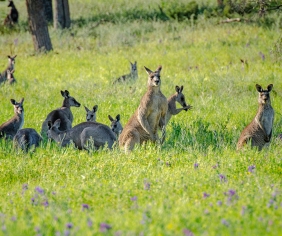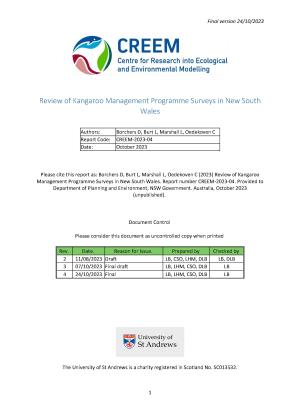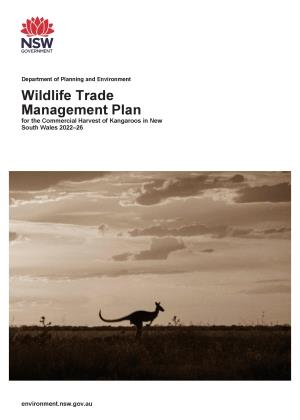The Department of Climate Change, Energy, the Environment and Water issues licences for commercial harvesting through the Commercial Kangaroo Management Program. Licences for non-commercial culling purposes are issued through the National Parks and Wildlife Service.
Commercial Kangaroo Management Program
Kangaroos have been commercially harvested in New South Wales for over 45 years. The Commercial Kangaroo Management Program works to maintain ecologically sustainable populations of the 4 commercially harvested kangaroo species and ensure that kangaroos are harvested humanely, in accordance with the National code for the humane shooting of kangaroos and wallabies for commercial purposes (2020).
We manage and regulate the commercial harvesting of the following 4 species of kangaroo:
- Eastern grey kangaroo (Macropus giganteus)
- Western grey kangaroo (Macropus fuliginosus)
- Red kangaroo (Osphranter rufus) – previously known as Macropus rufus
- Common wallaroo (Osphranter robustus ssp. robustus) previously known as Macropus robustus ssp. robustus
To manage the commercial harvesting of kangaroos we:
- monitor kangaroo populations
- establish sustainable harvesting quotas
- issue licences for the commercial harvesting and processing of kangaroos
- provide tags to licensed harvesters
- report to the public
- conduct research into kangaroo management practices.
Commercial kangaroo harvest management
The commercial harvest of kangaroos is guided by a wildlife trade management plan. These plans permit the legal export of native plants and animals and are assessed against the requirements of the Commonwealth's Environment Protection and Biodiversity Conservation Act 1999 (EPBC Act). The plans are to ensure that any commercialisation of Australian native wildlife for the purposes of export is managed in an ecologically sustainable way and promotes the humane treatment of wildlife.
Previously referred to as the Commercial Kangaroo Harvest Management Plan, the Wildlife Trade Management Plan for the Commercial Harvest of Kangaroos in New South Wales 2022-26 was approved by the Australian Government and declared by the Australian Government Minister for the Environment on 20 December 2021. The plan is approved for 5 years, expiring on 31 December 2026.
Along with the Biodiversity Conservation Act 2016, the wildlife trade management plan provides a management framework for the sustainable and humane commercial harvest of kangaroos in New South Wales. It establishes the licensing and compliance provisions and sets out the program monitoring, reporting and review requirements. The plan relates only to the commercial harvest of red kangaroo, eastern grey kangaroo, western grey kangaroo and common wallaroo.
Kangaroo management zones and quotas
The commercial harvest area of New South Wales is divided into 15 kangaroo management zones. Kangaroo management zones are used to allocate and issue harvesting quotas. Quotas limit the number of kangaroos of each species that can be harmed for commercial purposes in any kangaroo management zone.
View commercial kangaroo management zones maps
The commercial harvest of kangaroos is prohibited within national parks and other reserved areas. It can only be undertaken on private landholdings with the written permission of the landholder (owner or occupier/manager).
We monitor kangaroo populations to estimate the number and species of kangaroos in each kangaroo management zone. This is undertaken by trained wildlife counters using both fixed-wing aircraft and helicopters.
We use the kangaroo population estimates to calculate the harvest quotas for the following year, in accordance with the wildlife trade management plan.
The commercial kangaroo harvest quotas are generally set at 15% of population estimates for common wallaroos, eastern grey kangaroos and western grey kangaroos, and 17% of the red kangaroo population, with lower quota percentages allocated when populations are low.
We publish an annual quota report and an annual program report. Updates on the amount of quota allocated and the number of kangaroos harvested are published on this website each month.
Licences
You need a licence to harm kangaroos and to buy, sell or process kangaroo carcasses for commercial purposes.
Commercial licences
The types of commercial licence include:
- Kangaroo Harvester Licences – for professionals and landholders
- Animal Dealer Licences – includes Animal Dealer (Kangaroo) Licence and Animal Dealer (Kangaroo Skin) Licence
Commercial Harvester (Kangaroo) Licences authorise people with valid firearm licences and accreditations to harvest kangaroos and sell the carcasses, in accordance with licence conditions.
Animal Dealer (Kangaroo) Licences authorise licensees to process and deal in (buy, sell, import, export) kangaroo carcasses and skins.
Animal Dealer (Kangaroo Skin) Licences authorise licensees to process and deal in (buy, sell, import, export) kangaroo skins.
Harvesting for skins only is prohibited in New South Wales.
All types of licences are valid until 31 December in the year of issue.
Each licence type has conditions attached, and licensees must submit activity reports (returns) to the Kangaroo Management Program Team for monitoring purposes.
Non-commercial licences
Non-commercial licences to harm kangaroos for the purposes of damage mitigation and public safety are issued by National Parks and Wildlife Service (NPWS) area offices. Non-commercial licences can be issued for a property in any kangaroo management zone, including those where commercial harvesting is not permitted.
The carcasses of kangaroos culled under non-commercial licences can be used for non-commercial purposes, but cannot be sold, swapped or traded.
Non-commercial applications should be submitted to the local NPWS office that manages the area the property is located within.




